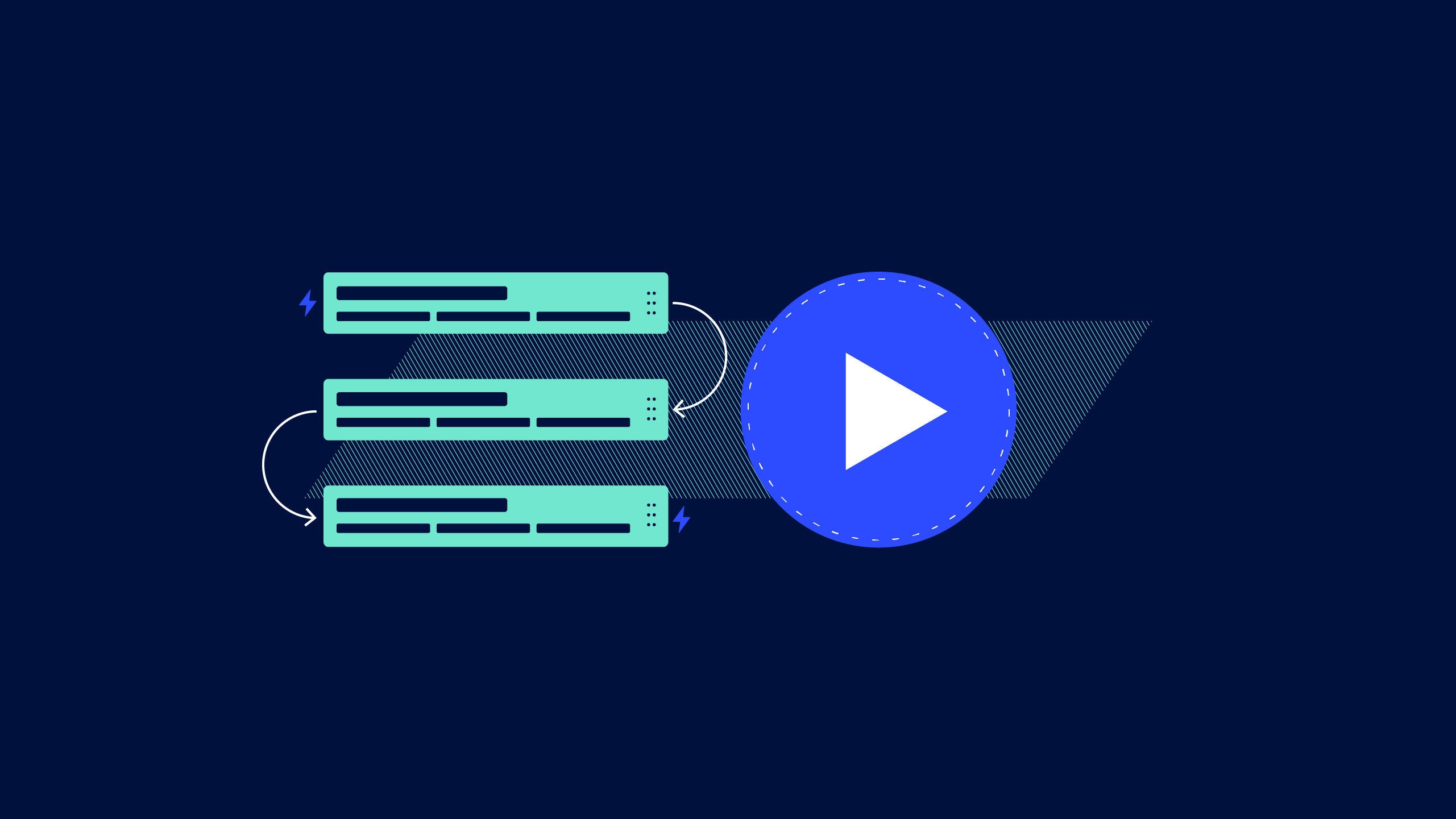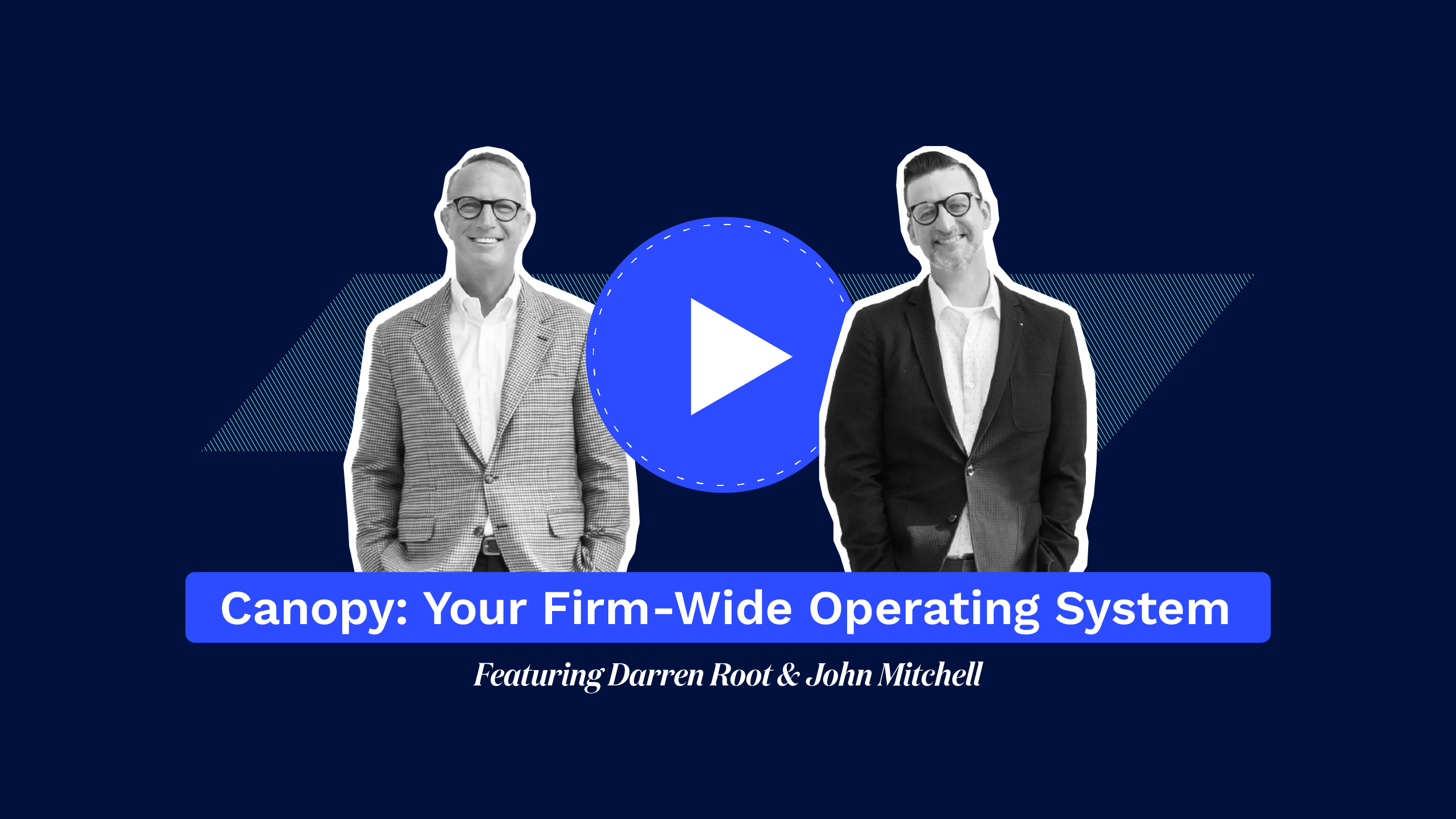In this episode, the conversation delves into the complexities of change management in accounting firms, emphasizing the challenges and strategies for successful implementation. John and Darren talk about the importance of understanding the psychological aspects of change, highlighting the need for patience, communication, and leadership to navigate transitions effectively.
Video Transcript:
John Mitchell: [00:00:00] Hello and welcome. My name is John Mitchell and I'm with my friend, Darren Root again. And we're here to talk to you on a big topic, more than we can cover in one short segment like this. But we're going to talk today about change management, Darren.
Darren Root: You know, John, it's. Probably one of the biggest challenges for accounting firms.
John Mitchell: Yeah.
Darren Root: Um, it's not that they don't know that they need to change, that they need to evolve, they need to implement a new solution. Uh, they need to adjust their client base, whatever that is. It's that change is hard and requires some, you know, um, intentionality to it.
John Mitchell: It really does. You know, I'm, I'm going through a series learning about change management right now.
And one of the things that's so profound to me, maybe you'll find something [00:01:00] interesting about it today is that basically changes of, it's a metaphysical thing. It's this thing that happens in our brain. They call them goat tracks, where you. Where you have things that you do every day, when you brush your teeth, when you put your clothes on, you put your socks on with your right foot first, then your left foot, all those are what, what scientists call goat tracks in your brain that you've learned.
And when you change something, call it a practice management software. When you change a piece of technology inside of your firm, you're not just dealing with personalities. You're not just dealing with one person who likes to have it the old way and another person who might be grumpy about change.
You're dealing with individual brain chemistries who are creating new goat paths and they're resisting that change. Much like a goat would go through a field and take the easy path without resistance. That's what your staff wants to continue to do. So, it takes patience, it takes time, and it takes, Darinar, you used the word, intent.
You have to come with intent, um, in order to show [00:02:00] people that it is worth the time, energy, and effort that it takes to create new goat tracks in your brain.
Darren Root: So when I went to the grocery last night, John and I came home with a new toothbrush. I don't know why , other than been 10 years, I don't , you know?
Other than that, whoa, that's a long time for a toothbrush. Just kidding, just kidding. . But I came home with a new toothbrush, so I had to face change this morning. You get a new
John Mitchell: GoPaths. Yes.
Darren Root: That explains
John Mitchell: everything. But you take that times a thousand and you add it, add the stress and anxiety and the job performance and all of the learning curve that you've already created and creating that, all of that creates angst that requires leadership.
One poor man with a toothbrush even.
Darren Root: I remember a few years ago, John, I implemented a change inside the accounting firm. Yeah. Yeah. Yeah. And, um, it wasn't going [00:03:00] well. I'll tell you what, I'll give you the scenario cause I suspect a lot of people watching, uh, can relate, relate. Yeah. So I decided. We were going to change, uh, sort of our accounting platform.
This wasn't QuickBooks. This was an internal, more of an internal, um, not, not our internal accounting, but you know, it was, um, it was accounting CS actually from Thompson writers. And we'd been using their prior product, prior product for quite some time. And what I did is said, Hey, we're moving to this new platform.
That's what I did.
John Mitchell: No time for goat tracks. No begin with
Darren Root: the end in mind. Within, within three weeks, I think everybody was threatening to quit. Nothing worked. Uh, people couldn't get their problems solved. None of that. I mean, it was, it was kind of blowing up [00:04:00] the firm. So I was like, all right, timeout, timeout.
What's the problem? What's going wrong here? It doesn't work. It doesn't do this. We can't get this done. Can't get our job done. You know, we're so busy messing with this. We can't do that. All this stuff. All right. I said, okay, here's the deal. The other solution is going away. We need to move to this. So our, our, our goal is we need to move to this.
Now I understand all the challenges that we're having. What I'm going to do is meet with you every other day. And we're going to do this for 15, 20, 30 minutes, whatever it takes in the conference room. This is when we all went in the conference room. And I said, I want to solve your problems. I might not be able to solve them immediately, but I'll get them solved.
And all of [00:05:00] a sudden, maybe not that minute, you know, that day, but within days. Things started getting better. People felt supported. They knew we needed to move. They knew that I was going to help them solve those problems, and I did this, John, I would say for a month. Every other, you know, probably at least two to three times a week.
I met with the team and solve their problems. And if I couldn't figure out how to solve them, I got with somebody who knew how to solve them, uh, better than I did. And I solved their problems. So what I learned at least about that situation. Is people, it wasn't so much the, the change, although it was the change, it was the people were being so disrupted and I just tossed it on them.
Does that make sense?
John Mitchell: It does. It reminds me of one of the things that we really wanted to mention today in this conversation about change management. And that is the importance of developing this rhythm of communication. [00:06:00] You know, one of the things that happens to people when they're creating new goat tracks in their brain is they get panicked that you're going to make them go through the high weeds.
Yeah. And what you were saying to them was I'm going with you and we're going to meet on a regular basis until we get this figured out. And so I think if you had to do it again, in retrospect, you might've started with that. Hey guys, this is going to be painful. Instead of just saying, we're making a change.
I know this is going to be painful. I'm in it with you, and we're going to create this rhythm of communication, whatever it is that gives you comfort that we're going to take this slow and that there are going to be problems, but we'll work through them together.
Darren Root: You know, taking one of my, uh, my heroes quotes, uh, which you and I have tendency to use a lot, but begin with the end in mind.
Have a number two from Stephen Covey. Yeah. Um, If, if. As you think about change in your organization, [00:07:00] if, and I'm thinking about switching to a tool like canopy now, you know, it's not a, it's not a, a simple lift. Yeah, but the end in mind is that we remove other point solutions. We get more data. Inside of our firm wide operating operating system, and we're setting ourself up for a better future with less friction.
That's what we're doing. Right. We're getting more data around customers in one place. We're taking friction out of a lot of different processes that you and I've talked about, uh, over multiple videos. And we're, we're pulling all them all into one place and setting ourselves up to leverage AI as we move our firms forward.
That's the end in mind. And then we need to create some clarity about what our next paths are. And in accomplishing this, because when you move to a solution like canopy, John, [00:08:00] you're moving out of, you know, your siloed document management system. You're moving out of your siloed portal system. You're moving out of your siloed communication system or your siloed invoicing and engagement letter proposal system.
And you're moving all of these point solutions into one tool, and that requires some, some effort, uh, and it's important to do this, though. Otherwise, when you look out 2 years from now, 3 years from now, 4 years from now, as things continue to evolve and change, and all the sparks continue to fly between all those different point solutions.
You can see a bigger win as this comes together.
John Mitchell: Yeah, Darren, I love it. And I think if you're listening to this today and you're going through a big change, whether it's Canopy or another one inside of your firm, steal that word friction. Because it's a word that you can begin to define, that your team can begin to use, language that they can use inside the culture to say this is a point of friction.
Now [00:09:00] be ready for this, they're going to tell you there's friction in the new one. Because friction to them feels like something different at the beginning. So you've got to define that friction, you've got to pick apart that friction, and you've got to look to reduce it. And then what you get. Is mutual buy in you get this, this opportunity where people see, okay, this is not just about a cheaper option.
This is not just about something that the firm owner went to a conference and got excited about. This is not just something that Darren Root said. And so they're moving. This is about, about us. It's about us getting better as a firm. It's about us providing a better experience. And in the long run, it's about our jobs being better, being easier, being more productive.
And if you can, if you can. Start with the end of mind and create that buy in inside of your team. What you'll find is not, it doesn't go away. The change management problem doesn't go away, but it becomes corporate. It becomes something that we're doing together. Um, and, and your team understands that you're in it with them.
And what you get is what I think is the most important part of your firm culture, and that is [00:10:00] trust. You get a firm who believes that you're on their side, and that's really what it takes to make a great change. The good news about Canopy is there is a really easy way to show them the upside of this change management.
Canopy makes it so clear. We hope videos like this, you can use to show your team, but over and over and over again, Canopy is working to create clarity so that you can share the message with your team that this is going to make things better. Better, and that's the heart of change management.
Darren Root: Yeah, John, I think as you talk to your team, big picture is firm wide operating system is the future in running an accounting firm.
That's important, but I also think it's important to your points, John, to set expectations. Right. Not everything is simple. Not everything goes smoothly. Not everything is easy. Uh, but set the right expectations. One of the nice things about [00:11:00] Canopy is they have onboarding specialists.
John Mitchell: Yeah.
Darren Root: Who can help you through this.
I mean, our friend Armin is an expert at all this. And he's helped lots of firms. Uh, he's fantastic at this. Um, I just think that now is the time. To move into a firm wide operating system, to get rid of point solutions, to integrate this, to start building your firm operating system, uh, the data structure of that, so you can leverage AI as we move more deeply into AI to better serve customers.
Now's the time to do that set expectations, but to your point, John, I think creating trust with your organization by being with them every step of the way. Is one of the keys on this journey.
John Mitchell: Yeah, the truth is, Darren, we've been doing this a long time and we care deeply about your firm and your team and your clients.
All of the people around your firm are [00:12:00] impacted greatly by the decisions you make. And part of the reason we partner with Canopy is we believe that this can be the heartbeat. Of some of the things in your firm that will lead to great customer experiences, great team experiences, and a better way of life, better way of living with work and life at the same time.
So we're hoping that you can find something from this change management series that will lead you on, that will lead your team and will lead you into more profit and a better way of doing business







Get Our Latest Updates and News by Subscribing.
Join our email list for offers, and industry leading articles and content.